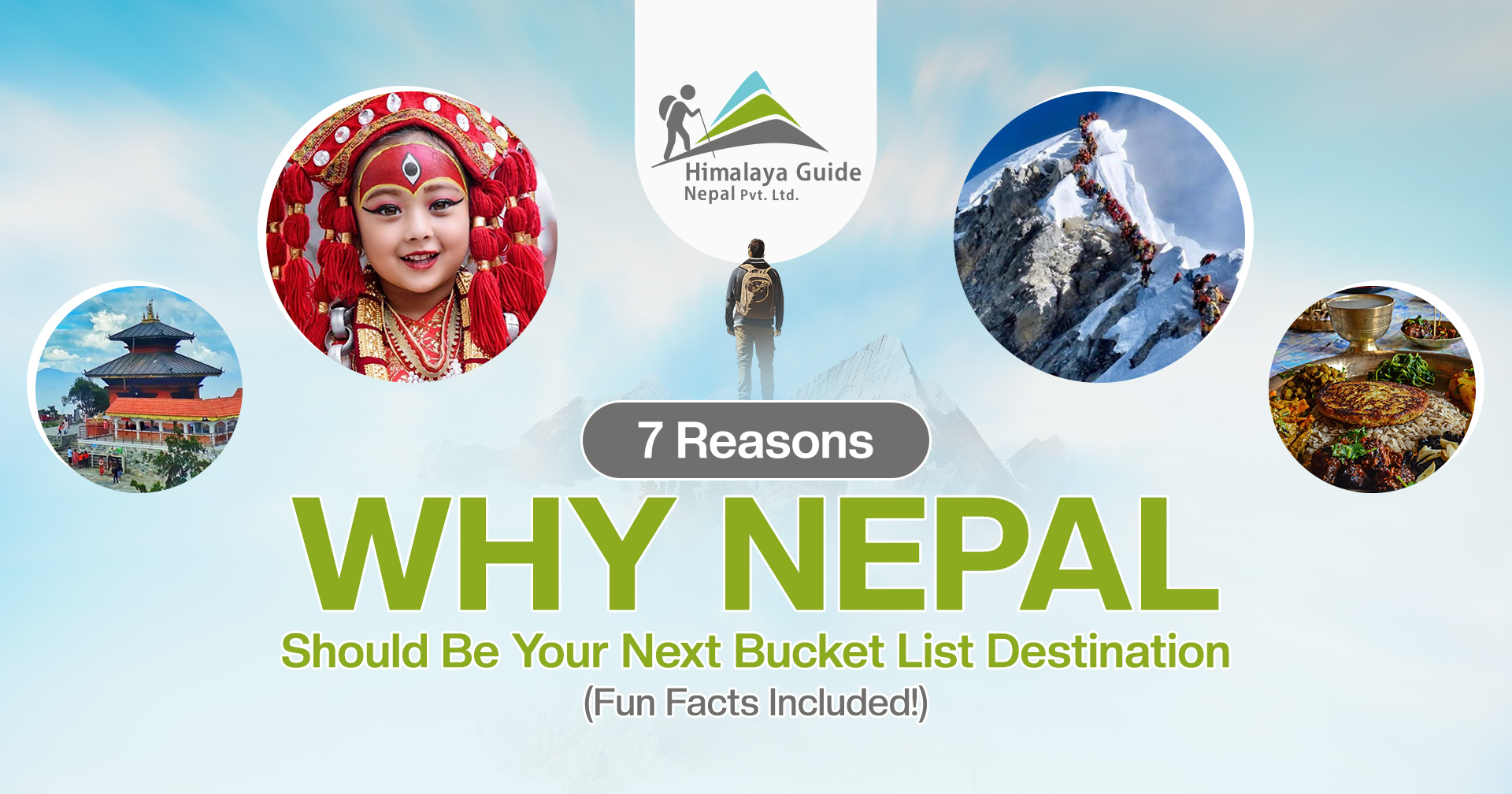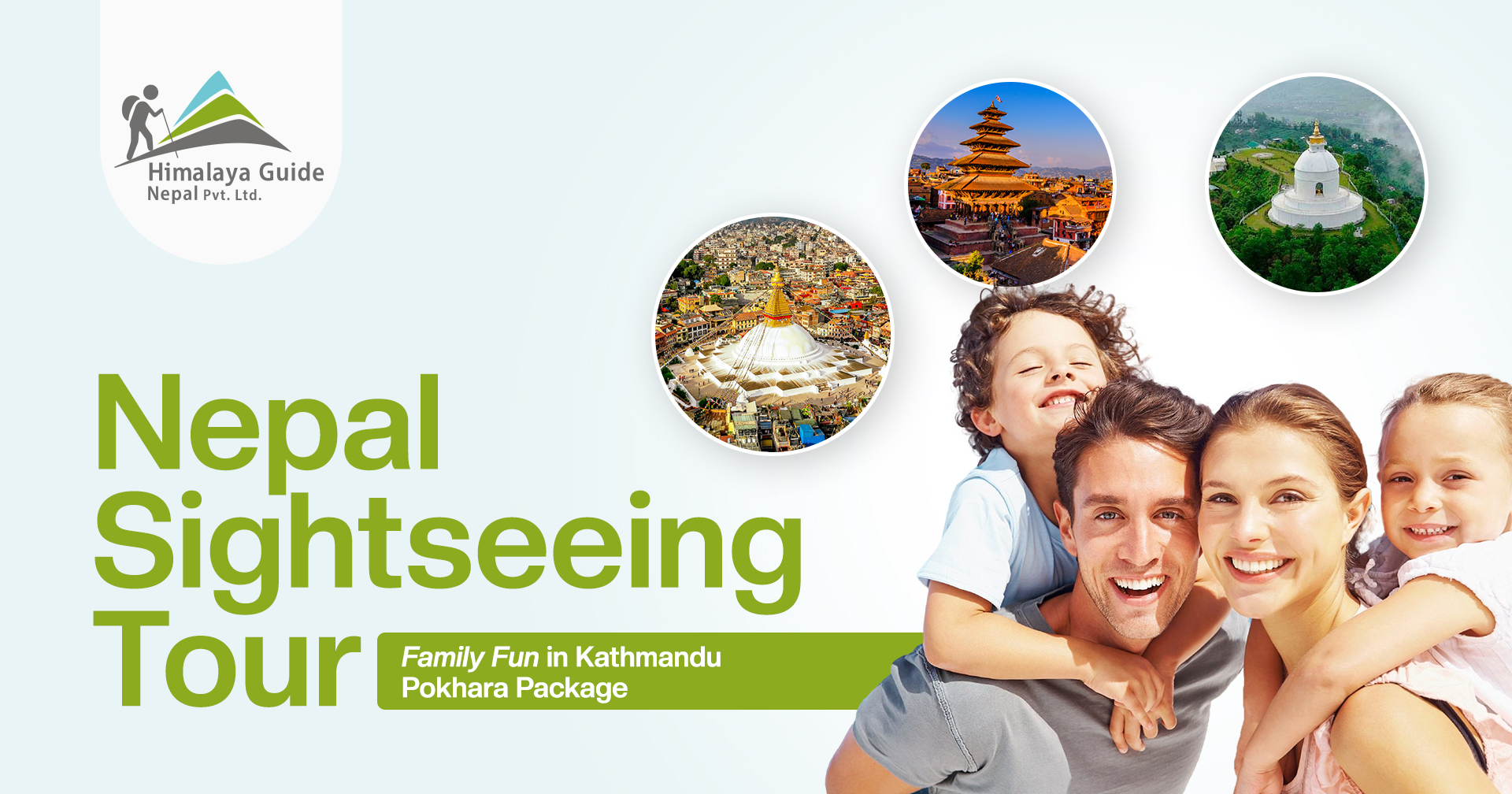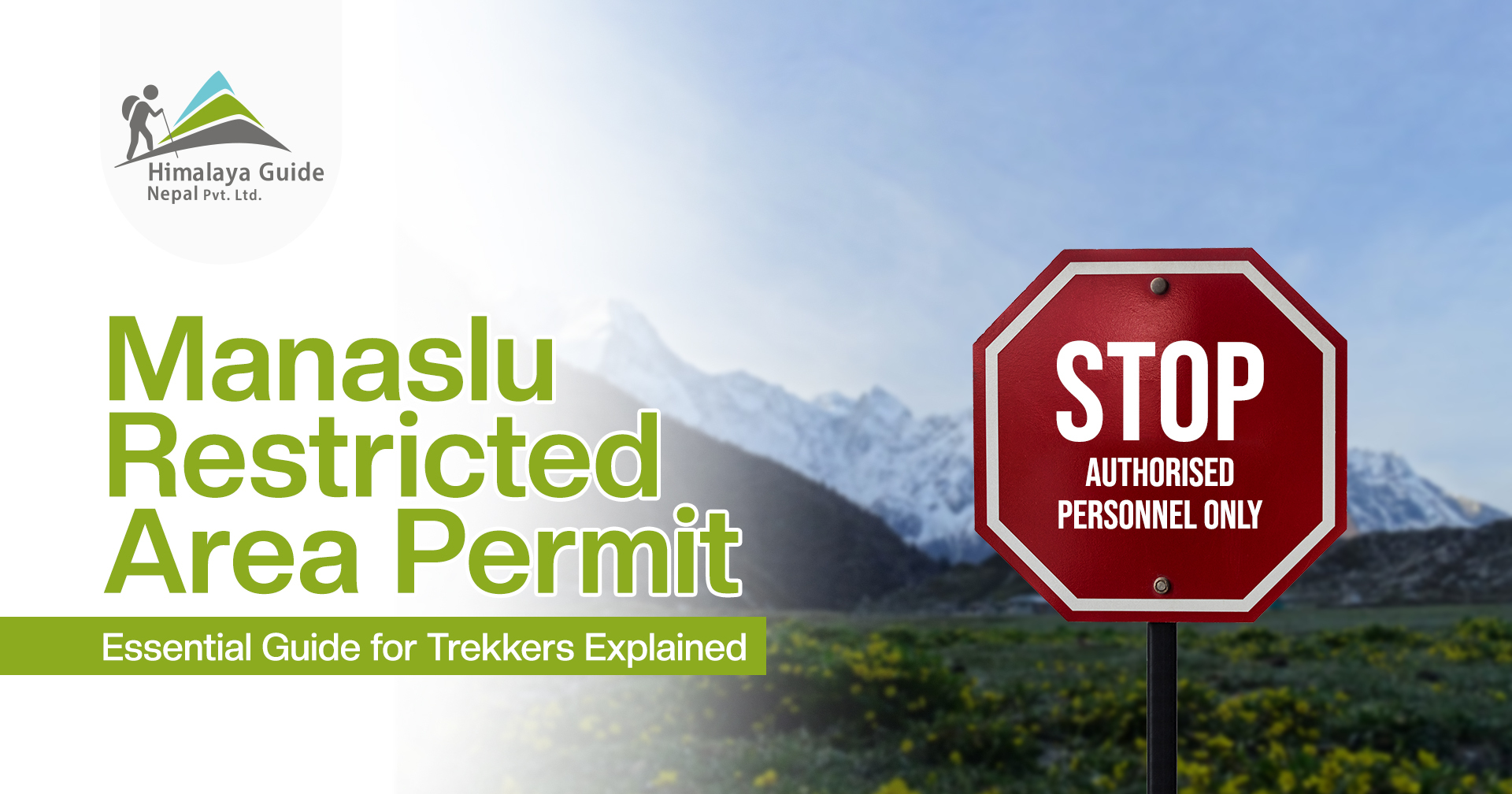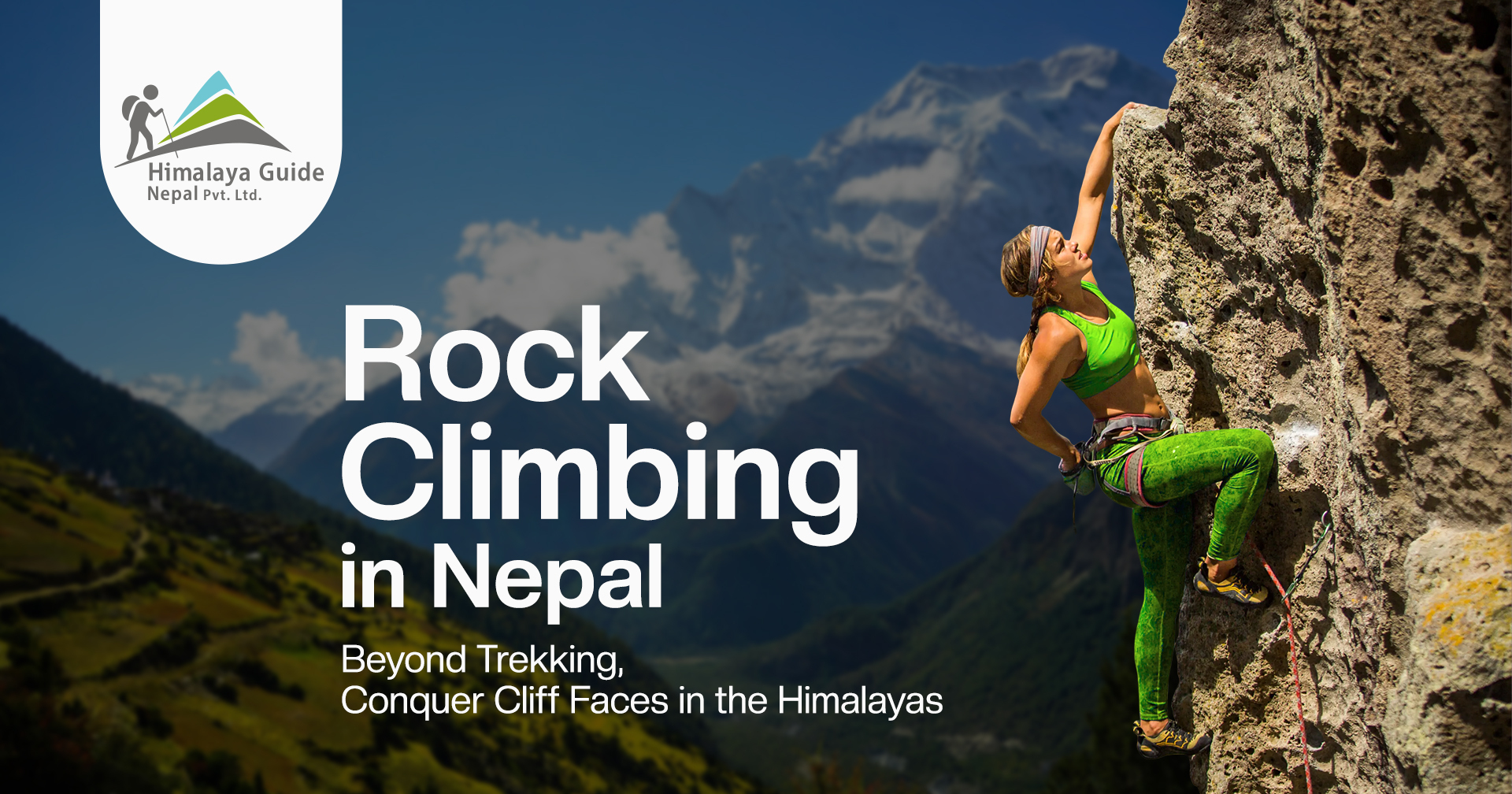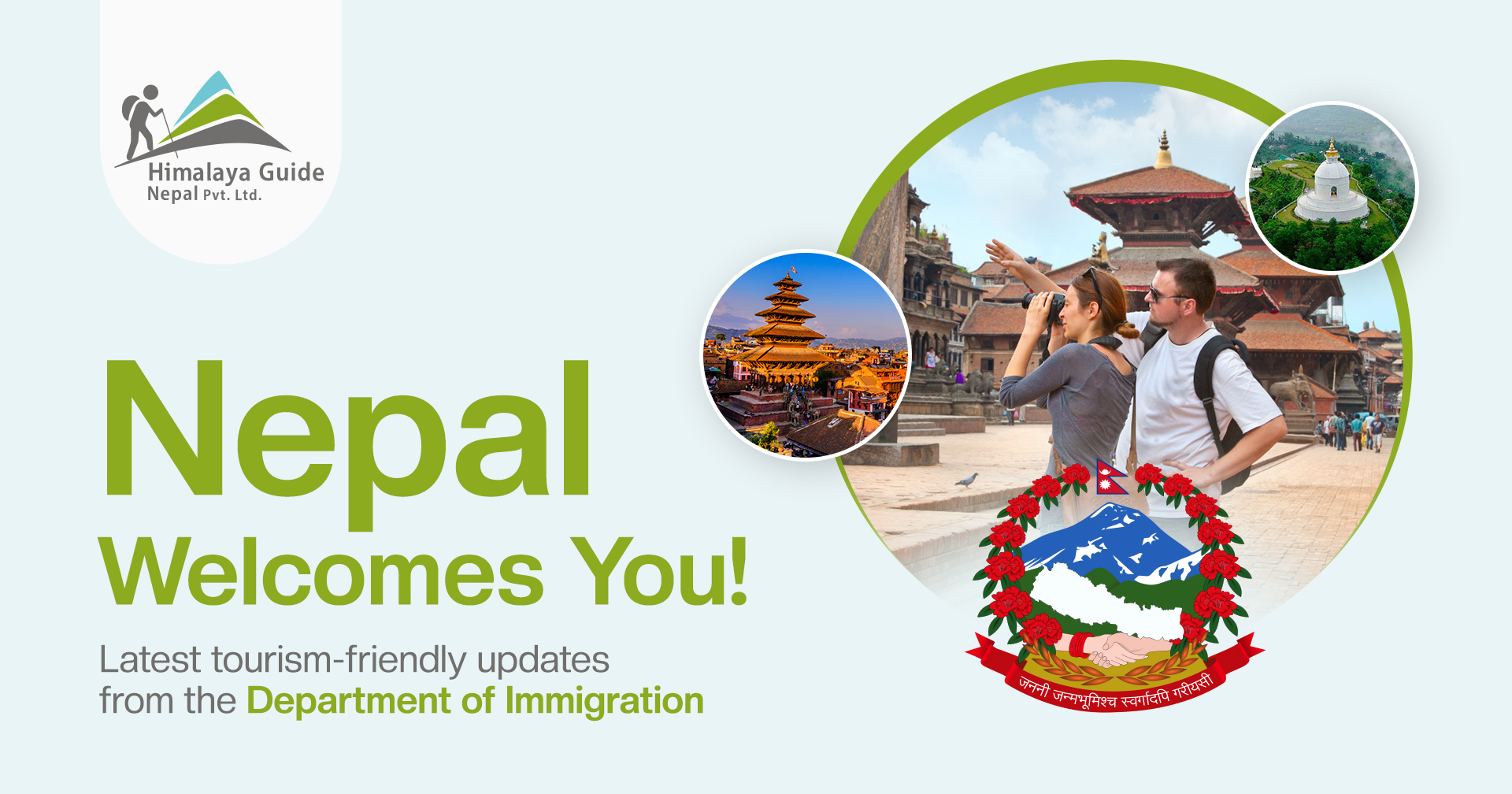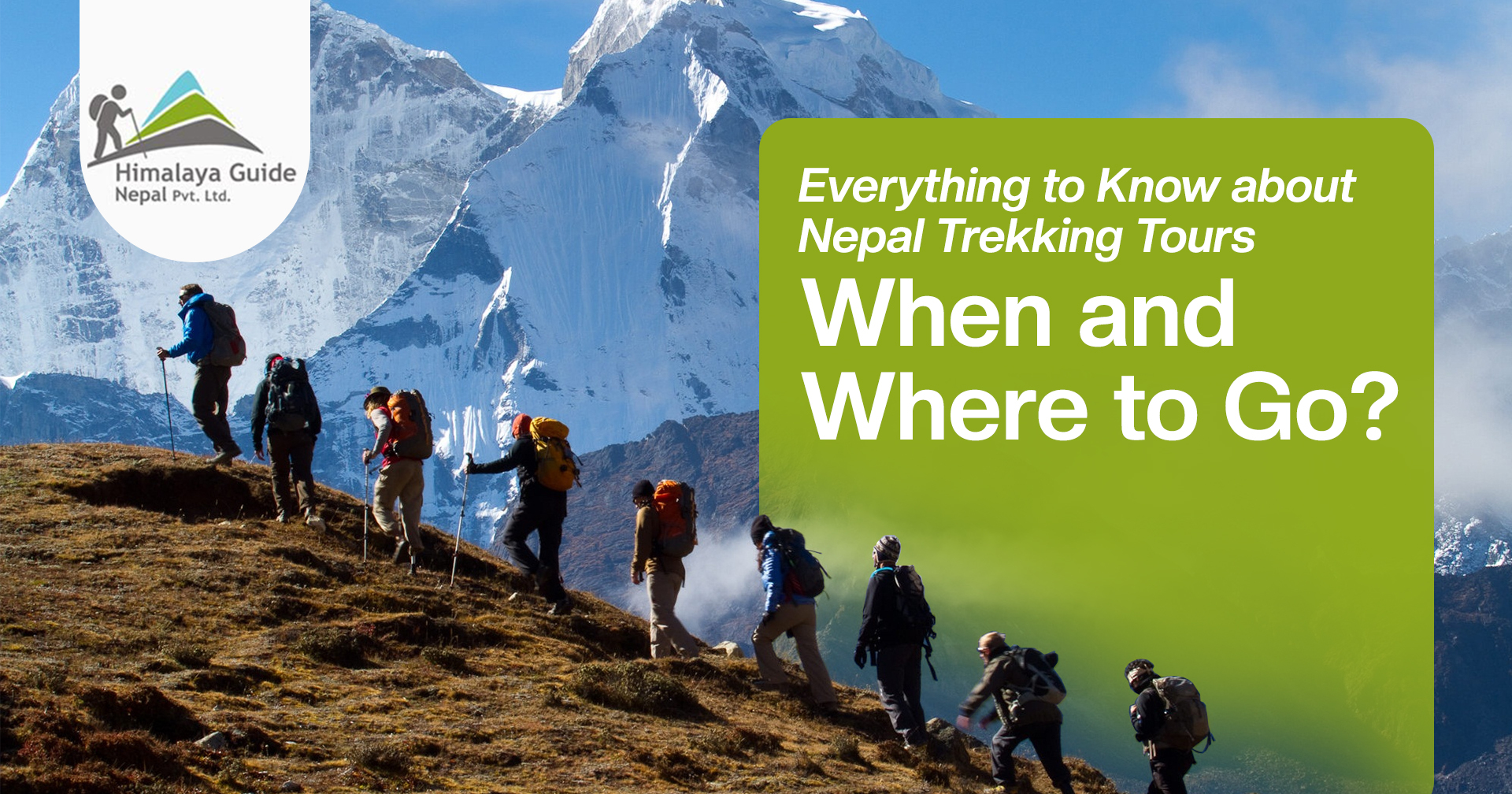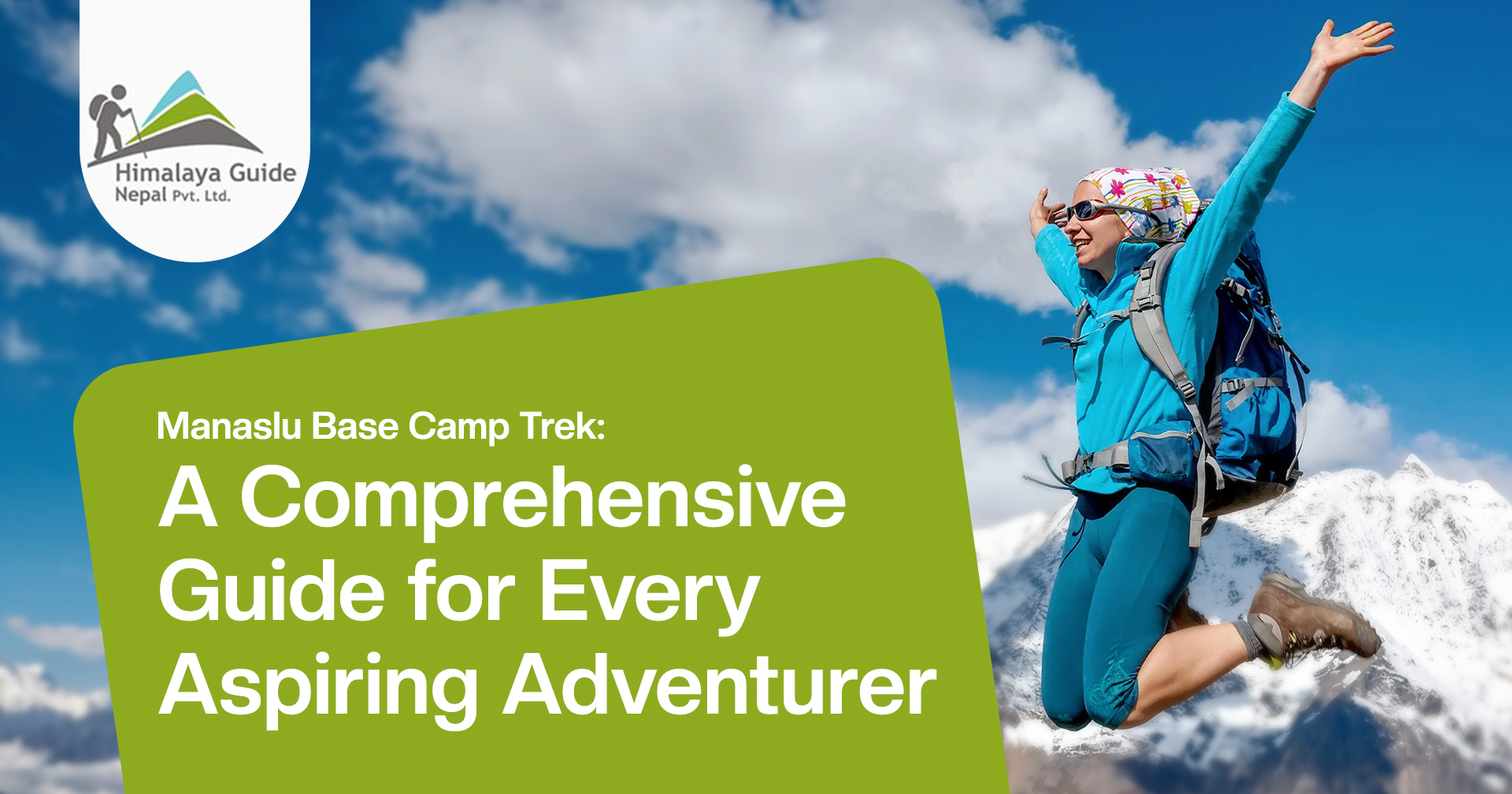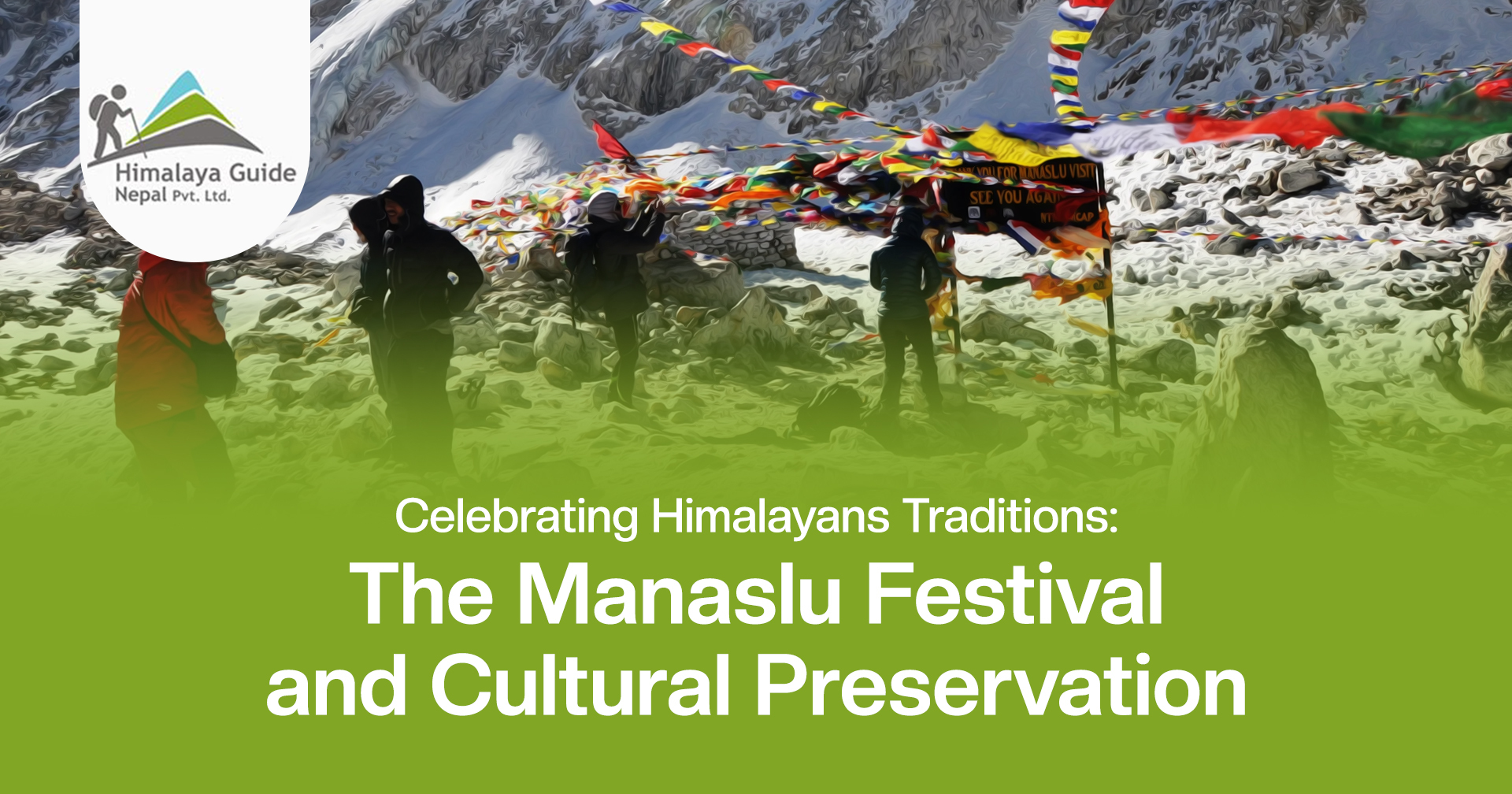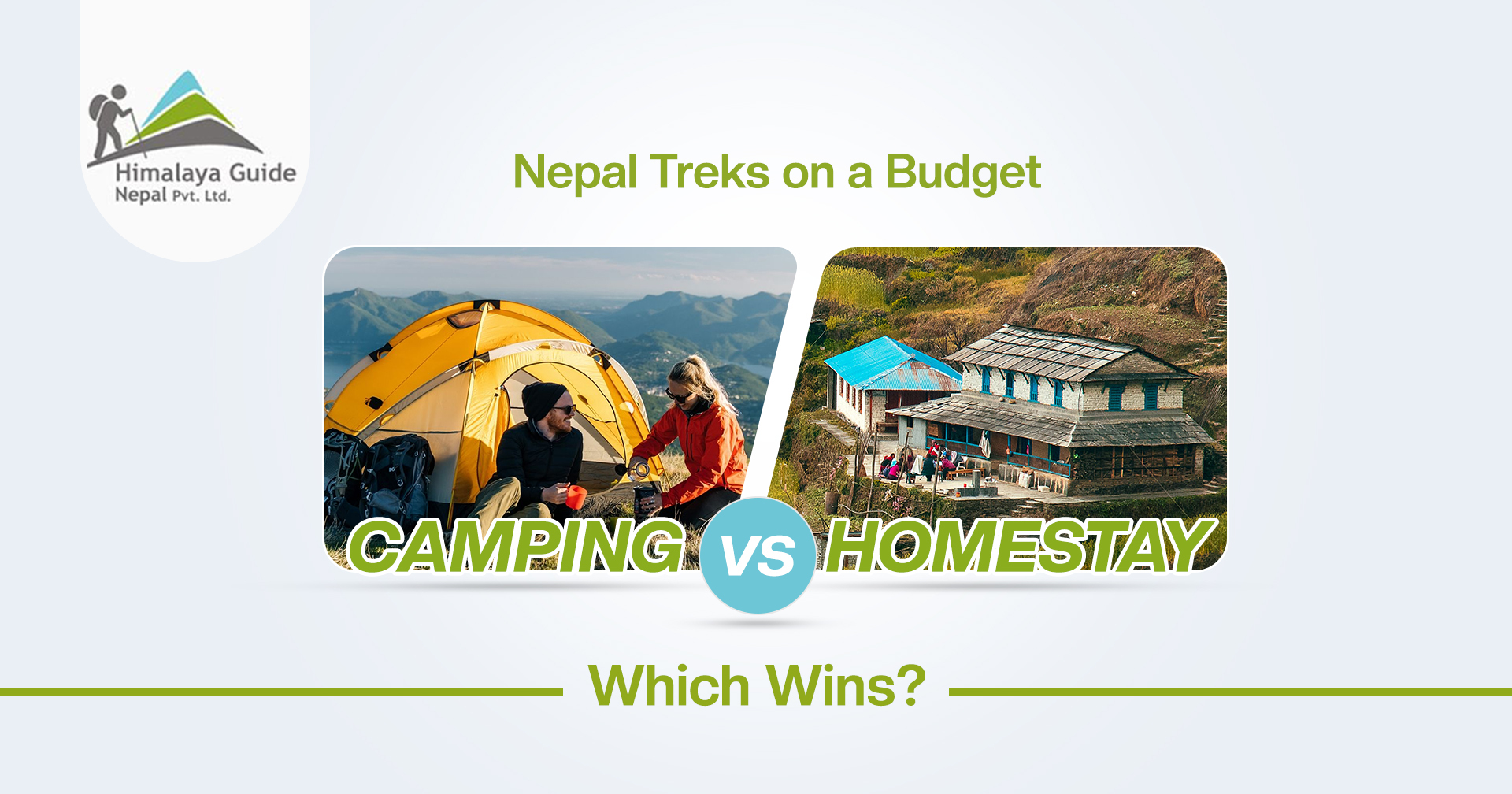Nepal has a unique culture deeply revered in the hearts of Nepalese. Experience peace and serenity in the naturally beautiful places in Nepal. Explore architectural heritage like Swayambhunath (Monkey Temple) and Kathmandu Durbar Square, and understand Nepal’s rich history and the ultimate fun facts about Nepal. Why include Nepal as the next bucket list destination?
In Nepal, a young virgin girl is chosen through a rigorous process to the throne of Kumari, the living goddess of Nepal. She is believed to be the embodiment of both divinity and sacrifice. Also, Nepal is home to the world’s highest mountain, Mt. Everest, at a height of 8,848 meters (29,029 ft).
7 Reasons to Visit Nepal (a bucket list destination)
Nepal can be your next travel obsession, as it’s a naturally beautiful place with adventures of many kinds. It is not just for mountain climbing, trekking, or adventure. Birdwatchers can also find the ultimate freedom by witnessing over 885 unique birds on their birdwatching tour in Nepal.
Learn about the colorful Himalayan pheasants (Danphe) and rare birds undisturbed in their natural habitats. The fact that you can include Nepal in your bucket list can be many, so why wait? Let’s explore some fun facts about Nepal.
1. Kumari, a Living Goddess in Nepal
Nepal has this unusual tradition and ritual where young virgin girls of the supreme Newari community, the Ratnakar Mahabihar clan, are chosen as the living goddess in Nepal. There are 3 kumaris in Kathmandu, Patan, and Bhaktapur, the un-menstruated girl possessing the divine power of Maa Taleju, as the classical and historical facts state.
Kumari tradition began during the regime of Jaya Prakash Malla, and since the 17th century, Kumari has been crowned as the legacy of tradition. From 2 to 7 years old, girls are selected as Kumari through tantric rituals and undergo spiritual transformation at a young age in life. Let’s dive into what the interesting facts of the Kumari tradition in the Newari community of Nepal look like.
- Kumari, the incarnation of Maa Durga, Taleju Bhawani,
- The living goddess can show only serious facial expressions to devotees.
- Kumari is the protector goddess of Nepal.
- When Kumari Chanira Bajracharya from Patan cried for 3 continuous days, the Royal Family Massacre took place in 2001.
- Chanira is the niece of the longest reigning Kumari, Dhana Kumari Bajracharya, who has not menstruated yet and follows the same lifestyle to date.
- Kumari does not step on the ground outside Kumari Ghar; Dhana Kumari only stepped during the 2015 earthquake in Nepal.
- Kumari belongs to the Buddhist community; it is believed that when Kumari menstruates, Devi Maa Taleju vacates from the body.
- Currently, the royal Kumari of Kathmandu, Trishna Shakya, has been on the throne since 2017.
- As of today, there are 10 kumaris, 9 of them inside families, and they are selected in the traditional courtyard communities of their respective bahals.
- Certain power ornaments and red dresses are compulsory to wear for Kumari and cannot be taken off even during sleep and bath.
2. Kathmandu, a cultural tour in Nepal
Kathmandu, the capital of Nepal, is rich in its culture and archaeological structures. UNESCO World Heritage Sites like Bodhanath Stupa and Hanuman Dhoka Durbar Square lie in the bustling capital of Nepal. At an elevation of 1400 m, Kathmandu beckons a suitable, moderate temperature for exploration.
Most Newar communities demonstrate their jatras like Rato Machhindranath, Indra, Bisket, Lakhe dance, Rath yatra, and amazing cultural experiences you can only see in Nepal. Some of the most visited places in Kathmandu after landing at Tribhuvan International Airport are Narayanhiti Palace, the Garden of Dreams, the vibrant street of Thamel, Dakshinkali Temple, and historical Durbar sites.
Shree Pashupatinath temple in Kathmandu, Nepal, is believed to be one of the holy shrines of the Hindu community. One can see live Shiva Aarati at dusk when the sun sets. Also, one can learn about the life-and-death cycle. the Hindu last ritual of cremating the deceased on the bank of the Bagmati River in Pashupati Ghat. Shiva Ratri is coming, so the holy temple is now to be redecorated. The purpose is to celebrate the birthday of Lord Mahadeva, the Tridev, as the Hindu classical texts mention. Where to stay?
3. Cultural performance in Nepal
Nepal hosts a plethora of festivals and cultural celebrations each month. Dashain is the longest and most celebrated festival, where the elderly put red vermin powder and jamara (barley leaf) on and bless the juniors. The festival of lights (Diwali), the festival of color (Holi), and the Newari performance (Jatras) define Nepal’s rich cultural tapestry.
Other communities in Nepal, like Tharu, show the Tharu stick and peacock dances. Nepal is a multilingual country with over 123 spoken languages and a blend of Indo-Aryan, Tibet-Burman, and indigenous cultures. The multi-religious country also has an Islam, Christian, and Jain community with its own unique dances, songs, and rituals.
A brief introduction to cultural fun facts about Nepal
Tibetan Buddhists celebrate festivals like Tamu, Sonam, and Gyalpo Lhosar. Their cultural folk dances include Chaiti, Tungma, Keja, and Yachu. Also, traditional folk songs like Ghatu, Jhorra, Yanimaya, and Salaijo are integral parts of their culture. Terai people celebrate Chhath Puja as a major celebration, worshiping the Sun.
Traditional gold ornaments like Bhangra for Gurung men and velvet Ghalek for females demonstrate the culture of Gurungs. Dohori Sanjha and its respective cultural fairs, festivals, and fairs are performed in Nepal. Deuda dance, Gurung dance, Bansuri, Madal, and Sitar are some unique parts of Nepali culture.
Even, Buddha Purnima, Christmas, Krishna Janmashtami, Ram Jayanti, and Eid are celebrated liberally, as no such restriction is there for cultural demonstrations in Nepal. The Government of Nepal respects cultural sensitivity and declares holidays in specific provinces and communities where such celebrations take place.
One can meditate Vipassana at the Dhamma organization, visit monasteries in search of spiritual solace, and devote themselves to god. It is quite a blessing to discover your inner self in the rustic setting of Nepal.
4. Nepali Cuisines
Dal Bhat Tarkari is the staple Nepali cuisine consumed every day. If we talk about Nepali cuisines, the regional culinary specialty. Learn about the fun facts about Nepal and its deliciously inviting food. Your perfect accommodation guide in Nepal.
a) Kinema:
In eastern Nepal, kinema is a popular food, which means fermented flavors, as ‘ki’ stands for ‘fermentation’ and ‘nambaa’ stands for ‘flavor’. This fermented soybean dish from the Limbu and Rai communities has an intense flavor (pungent or spicy). Kinema ko jhol has dietary benefits, and many other Asian countries also consume this fermented dish.
b) Home-made alcoholic beverages
Chhaang is a fermented millet beer, the national drink of Nepal. Also, tongba is another unique alcoholic beverage that is equally loved.
c) Sel Roti
Sel roti is the deep-fried rice bread enjoyed at celebrations and festivals in Nepal. This ring-shaped sweet dish just uplifts your mood with tea, achar, and side dishes of Nepali cuisine.
d) Kathmandu cuisines
In Kathmandu, cuisines like yomari steam sweet dumplings with molasses and sesame. Thus, Newari special delicacies, like Chatamari (savory rice crepe), Choila (spicy grilled buffalo meat), and Samay Baji (a platter of smoked meats, beaten rice, and vegetables), are ones to try on a visit to Nepal.
e) Gundruk and Dhido
Gundruk is a fermented green vegetable used in soupy curries in Nepal. When it is taken with the thick porridge of Dhido, this Himalayan dish just savors your taste buds with Nepali spices. It’s definitely one of the most famous foods from Nepal, besides momo and thukpa.
f) Thakkali cuisine
Thakali cuisine offers a fusion of Himalayan flavors and Tibetan influences. The aromatic herbs like Jimbu (Himalayan leaf garlic) and Kanchhemba (buckwheat finger millet), served with a generous amount of ghee, please the heart. Also, try out momos (meat dumplings) and thukpa (noodles soup) with authentic Nepali taste on your next visit to Nepal.
g) Terai cuisine
In the Terai region of Nepal, Mithila cuisines like mustard oil, Chawal Rotu, Rohu fish, Choka, Chutney, and Thekuwa sweets are popular. Whereas, Tharu cuisines like ghonghi (river snails), fish curries, and an abundance of fresh vegetables are savored for their rich flavors and textures.
5. World’s Highest Mountain
Trekking in Nepal is an exciting adventure one always dreams of. If you are a mountain person looking to spend quality time with your loved ones in the chill wind or take up an adventure to explore the mountains, this is just for you.
Island Peak Trek (6,189 meters), Ama Yangri Trek, Number Valley Trek, Barun Valley Trek, and Manaslu Circuit Trek are some of the adventures where you can test your spirit. Also, you can explore the high-altitude temples in the Far West, like Badimalika. Let’s see fun facts about mountains in Nepal,
i) The world’s highest peak
Nepal consists of 8 of the world’s 14 “eight-thousandths” highest peaks, above (26,247 ft) in height. Highest of all, Mt. Everest also has alternative names like Sagarmatha (Nepal), meaning “Goddess of the Sky”. Also, it has its Tibetan name, “Chomolungma” which stands for “Mother Goddess of the World.”
Mt. Everest was first submitted in 1953 with a Sherpa guide, Tenzing Norgay. Get yourself a trekking guide like Himalayan Sherpa, who can make your trekking in Nepal worthwhile.
ii) The Kali Gandaki George
The Kali Gandaki George is the second-deepest canon on Earth, with a depth of 18,278 feet (5,571 meters), between Mt. Annapurna I and Mt. Dhaulagiri. The Kali Gandaki Canyon, also known as Andha Galchi, witnesses the flow of the Kali Gandaki River (one of the Saptagandakis in Nepal).
Located in the Mustang district, the topmost part of the gorge is also known as Thak Khola, the residence of the Thakali people. It was once a commercial border between Nepal and Tibet. Nestled in the Annapurna Sanctuary, one can have an amazing view of Tukuche Peak, Lamjung Himal, Machhapuchhre, and the Mustang region.
iii) Arun Valley Trek:
Arun Valley Trek is the deepest valley in the world, with an 8,391-meter depth, between Sagarmatha and Makalu Barun National Park. In this trek, you can reach the maximum altitude of 4,200 meters (13,780 feet) at the Salpa Bhanjyang pass.
Even with 14 extinct species of birds, a rare and vibrant bird-watching tour can be conducted in the Sankhuwasabha district of Nepal. Not to forget, Nepal is home to over 885 species of birds, which makes it a suitable birdwatching destination across the world.
6. How did Nepal get its name?
There is historical significance regarding how Nepal got its name. According to 14th-century historical records, it was already referred to as Nepal. Prithvi Narayan Shah, the father of the nation, gathered all the states and united them with a common anthem. Here are some quick fun facts about Nepal and how it got its name.
The patriotic monarch also introduced a triangular-shaped flag, the “ Rato Rachandra Surya Flag,” with a blue crimson border, uniting the true origin of the Nepalese nationality. Here is how Nepal got its name and fun facts behind the name Nepal.
i) Hindu Mythology
Nepal breaks down into two sounds, Ne and Pala. As per Hindu classical text, the ancient sage Ne, is the protector of the land, whereas pala means the protector. Ne lived on the banks of the Bagmati and Bishnumati rivers in the country.
ii) Geographic location
As per the Kathmandu valley, Newari was the prominent culture. The name, Nepal also implies central country, where “Ne” is the “center” and “pa” is the “country.”
iii) Tibetan influence
Nepal is one of the largest wool suppliers in the world. Its commercial market was expanded in Tibet. In Tibetan, “Ne” means “home” and “pal” means “wool, indicating the origin of the name Nepal.
iv) Holy cave
Nepal got its name from the Lepcha dialect, where ‘Ne’ means ‘holy’ and ‘pal’ means cave. Besides, the monarchs in Kathmandu, the kings of the Gopal dynasty, were known as ‘Nepa.’ Hence, the country got its name after their honor.
7. Some Interesting Reasons to Visit Nepal
Nepal is a spiritual hub with Lumbini, the birthplace of Lord Buddha. One gets to meditate in serene monasteries and find inner peace amidst the Himalayas. In addition, let’s unfold other reasons, ( bonus fun facts about Nepal)
- Nepal is referred to as “the land of gods,” with many Hindu shrines and Buddhist monasteries.
- Nepal is home to diverse wildlife in Chitwan and Bardiya National Park.
- With white-water rafting on Trishuli, mountain biking in scenic valleys, and bungee jumping in Pokhara, you can explore Nepal on a budget.
- Nepal has one of the world’s highest lakes, Tilicho Lake (4,919 meters) at Annapurna Sanctuary.
- Nepal has over 12 high mountain passes: Thorong La Pass (5,416 meters), Cho La Pass (5,420 meters), and others.
- Nepali Gorkhas have a rich and courageous history; they were never under the colony of the European powers.
- Cows are worshiped as the holy animal (national animal), and consuming beef is restricted in Nepal.
- Once known as Hippies Have, Nepal now makes all those substances and weed use illegal.
- Mt. Cho Oyu (8,188 m) is one of the most accessible eight-thousanders, with a less technical and more straightforward route.
Conclusion
Nepal is beyond description. Refer to the above fun facts about Nepal we did. Nepal simply invites you to visit its grandeur, with the welcoming respite of friendly locals. Every season, you can find an interesting twist. From numerous vibrant cultural celebrations and festivals to challenging hikes and treks, you can find your fun.
Moreover, witness the wonders of diverse ecosystems in Nepal, including the elusive snow leopard. Beyond that, leave a lasting memory with cultural immersion, breathtaking scenery, and thrilling adventures of your interest with your loved ones. So pack your bags and explore Nepal with the Manaslu Guide.

